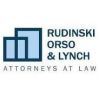-
About
- About Listly
- Community & Support
- Howto
- Chrome Extension
- Bookmarklet
- WordPress Plugin
- Listly Premium
- Privacy
- Terms
- DMCA Copyright
- © 2010-2025 Boomy Labs


 Jerry E. Lynch
Jerry E. Lynch
Listly by Jerry E. Lynch
If you’ve been injured in a slip-and-fall accident in Pennsylvania, then you may be entitled to sue and recover compensatory damages. The defendant — who is responsible for your injuries — may have a number of defense arguments they can employ to minimize or avoid liability.
The defendant may attempt to identify pre-existing medical conditions and injuries that you suffer from, and draw a parallel to the injury you suffered in the slip-and-fall accident. If they can show that the injury is not “new,” then they can avoid liability altogether.
For example, if you complain about neck pain following the accident, but the defendant discovers medical records indicating that you already had pre-existing neck pain, then they will try to argue that the symptoms are not “new” and therefore they cannot be held liable.
Importantly, you can still recover if you can show that the old injury/condition was exacerbated by the accident. In the above example, if the neck pain was enhanced significantly, then you would be entitled to recovery for the losses associated with that higher level of pain.
Plaintiffs are barred from recovery in the slip-and-fall context if the slipping hazard was “open and obvious” at the time of the accident. In other words, if the dangerous condition was in plain sight or otherwise known to the plaintiff before they encountered it, then the court will bar the plaintiff from recovery.
Whether the danger was known or should have been obvious is a fact-specific issue. For example, a shallow puddle of water in a poorly-lit grocery store aisle may not be visible to the naked eye, but a puddle of bright orange juice may be visible, making the latter an “open and obvious” hazard.
In some cases, the defendant may argue that you — the plaintiff — did not actually slip due to the hazard, but simply due to a misstep on your own part. For example, there may be a puddle of liquid in a grocery store aisle, but if you slip and fall, it’s possible that you slipped due to your shoes having poor traction (and due to a misstep on your own part having nothing to do with the puddle).
If the hazard did not significantly contribute to your injuries, then the defendant cannot be held liable for the damages suffered.
In slip-and-fall cases, the defendant cannot be held liable unless you can show that they either knew about the hazard and did not correct it, or that they had sufficient time to inspect the premises and discover the hazard (and either warn visitors of the hazard or correct it).
Whether the defendant should have inspected and discovered the hazard is a fact-specific issue that depends on the industry in which the defendant is involved, and other circumstantial factors.
For example, if you slip-and-fall due to a spill in a restaurant, and you discover that the restaurant inspects the floor every hour (but that the spill occurred after the previous floor inspection and before the next one), then that may be “reasonable” in the context of the restaurant industry. The defendant could argue that they simply did not learn about the hazard in time to correct it.
If you’ve been hurt in a slip-and-fall incident, seek legal guidance right away. Businesses have a legal obligation to ensure their premises is maintained in an appropriate and safe manner. However, you, as the injured party, are required to make your claim within a certain amount of time -- this is known as the statute of limitations. Under Pennsylvania law, the statute of limitations for an injury claim is currently two years from the date of the injury. Time is of the essence, so ensure that your claim is made in a timely fashion.
